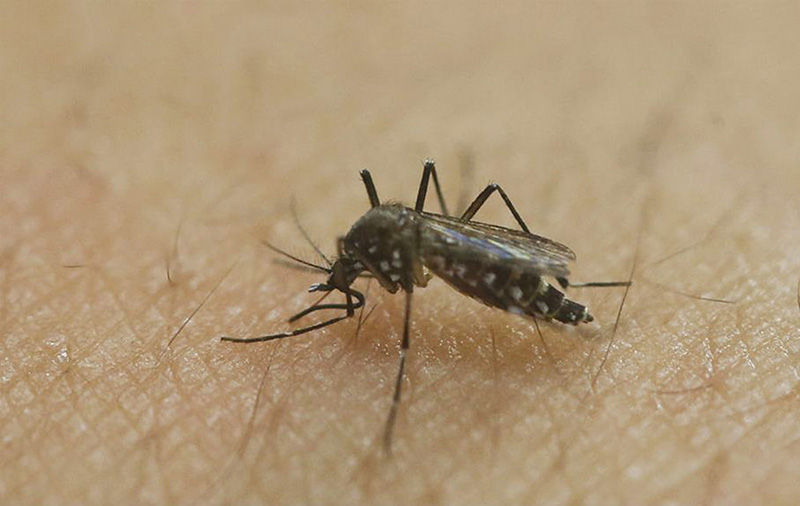KOKEE — New technology that could help out Kauai’s endangered forest birds is on the horizon, but questions remain. Gene drive mosquitoes are on the table, and the University of Hawaii would develop them to combat avian malaria, a disease
KOKEE — New technology that could help out Kauai’s endangered forest birds is on the horizon, but questions remain.
Gene drive mosquitoes are on the table, and the University of Hawaii would develop them to combat avian malaria, a disease that takes down honeycreeper and other forest birds.
“Gene drives, also known as ‘mutagenic chain reactions,’ aim to alter DNA so an organism always passes down a desired trait, hoping to change over time the genetic makeup of an entire species,” said Vadana Shiva in a press release.
The potential results of such technology could be the eradication of mosquitoes within 11 generations — about one year in mosquito world.
Mosquitoes spread two diseases to Kauai’s forest birds, said Lisa “Cali” Crampton, leader of the Kauai Forest Bird Recovery Project, avian malaria and avian pox.
Native birds, like the honeycreepers, have little immunity to the non-native diseases, carried by these non-native bugs.
“The Hawaiian Honeycreepers, all the brightly colored birds, in particular are highly susceptible to avian malaria,” Crampton said. “Ninety-nine percent of iiwi die after a single bite from a mosquito infected with the pathogen that causes avian malaria.”
Avian malaria is thought to be the primary cause of the current decline of Kauai forest bird species, but avian pox has a hand in the picture as well.
“Avian pox causes lesions and deformities on the beaks and feet of our native birds,” Crampton said. “These lesions can impede the birds’ ability to eat and perch. If they can’t perch, they are more susceptible to predators. Kauai Elepaio are particularly prone to pox.”
Since mosquitoes aren’t native to Hawaii and aren’t an essential part of the food chain for birds, Crampton said she doesn’t see any major upset to Kauai’s ecosystems should the insects be suppressed or eradicated.
“Most of our insect-eating native birds find their food by pecking, not by catching things in the air,” Crampton said. “The exception is the Elepaio, and I’m sure if one had a chance to eat a mosquito, it probably would.”
Nixing these insects could also curb many vector-related diseases in humans, such as Zika, but releasing these genetically modified mosquitoes could have far-reaching and unknown effects.
Because delicate questions hang in the balance, members of the International Union for the Conservation of Nature have voted to adopt a de fact moratorium on supporting or endorsing research into gene drives until IUCN has fully address impacts of using the technology.
A list of international environmental experts and organizations was released Thursday at the beginning of the 2016 IUCN World Conservation Congress in Honolulu, advocating for the halt of proposals for use of this technology.
The group detailed their thoughts in an open letter entitled “A call for conservation with a conscience: no place for gene drives in conservation.”
“Gene drives, which have not been tested for unintended consequences, nor fully evaluated for ethical and social impacts, should not be promoted as conservation tools,” the letter states.
Taking a beat before diving into genetic extinction technology is a good idea in the eyes of some Hawaii residents, who maintain Hawaii has been tinkered with enough.
“From military testing to GMO crops, and now gene drives, Hawaii should not be treated as a test zone for risky and experimental technologies,” said Walter Ritte, Native Hawaiian activist. “What happens in Hawaii must be discussed with residents. Hawaiians should decide what’s best for Hawaii.”


